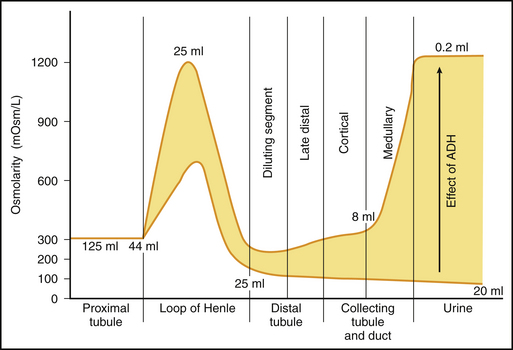19 CASE 19
A 45-year-old man comes to the emergency department complaining of severe pain on his right flank.
LABORATORY STUDIES
PATHOPHYSIOLOGY OF KEY SYMPTOMS
Fluid balance within the body requires adjusting accumulation, through ingestion and metabolism, against elimination in the urine, feces, breath, skin, and sweat. Excessive sweating in the absence of additional water ingestion results in dehydration, characterized by a decrease in both the extracellular and cell water stores (Fig. 19-1).
Although sweat does contain NaCl, sweat is hypotonic compared with plasma. Consequently, excessive sweating results in an increase in osmolality in the body fluid compartments. The increase in osmolality stimulates the release of antidiuretic hormone (ADH, vasopressin) from the posterior pituitary. ADH increases the permeability of the distal tubule and collecting duct to water and urea and results in the production of a very small volume of highly concentrated urine. In this patient, the urine osmolality of 1200 mOsm/L is close to the maximum urine concentrating ability (Fig. 19-2).
< div class='tao-gold-member'>
Stay updated, free articles. Join our Telegram channel

Full access? Get Clinical Tree




